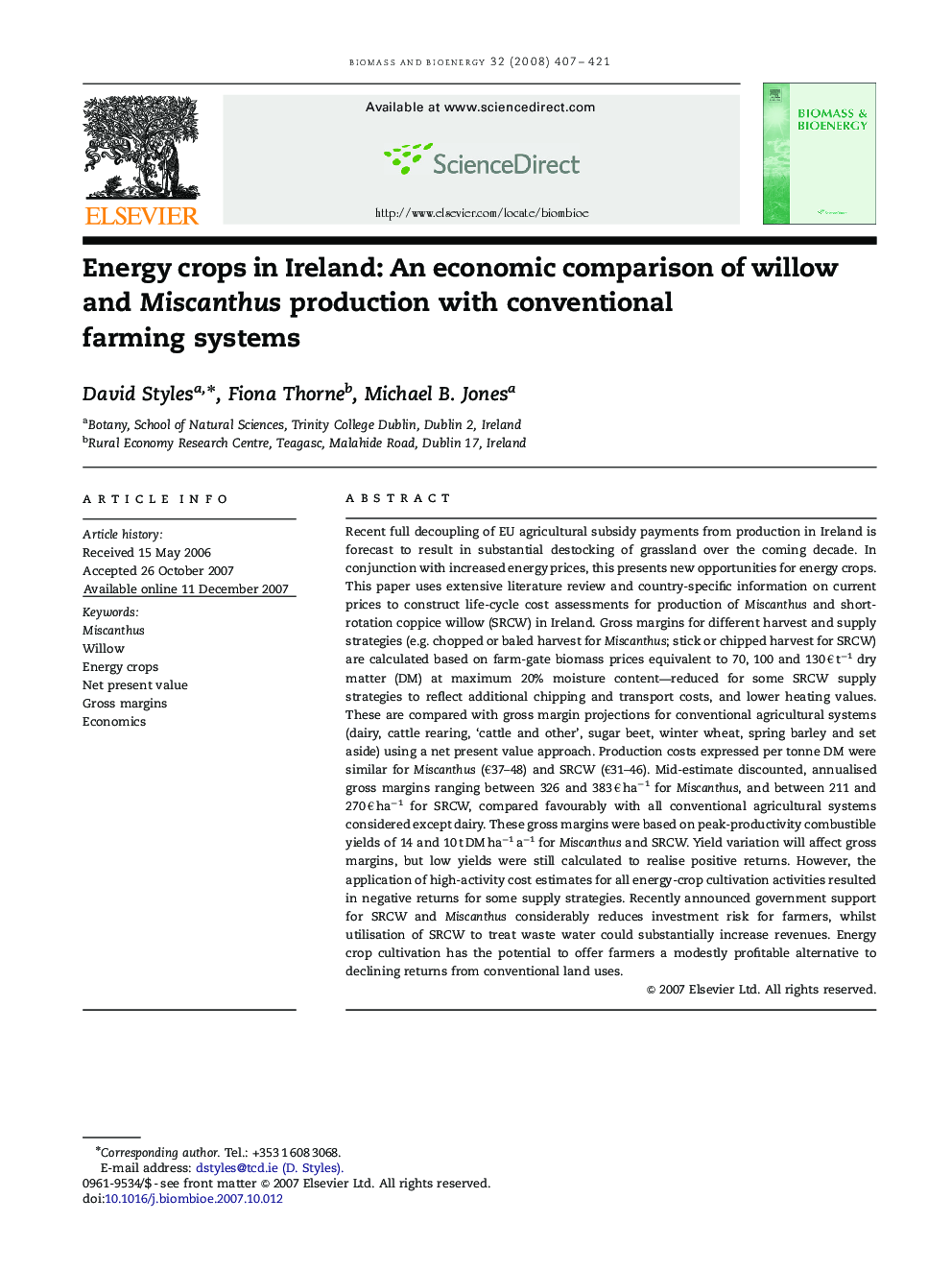| Article ID | Journal | Published Year | Pages | File Type |
|---|---|---|---|---|
| 678617 | Biomass and Bioenergy | 2008 | 15 Pages |
Recent full decoupling of EU agricultural subsidy payments from production in Ireland is forecast to result in substantial destocking of grassland over the coming decade. In conjunction with increased energy prices, this presents new opportunities for energy crops. This paper uses extensive literature review and country-specific information on current prices to construct life-cycle cost assessments for production of Miscanthus and short-rotation coppice willow (SRCW) in Ireland. Gross margins for different harvest and supply strategies (e.g. chopped or baled harvest for Miscanthus; stick or chipped harvest for SRCW) are calculated based on farm-gate biomass prices equivalent to 70, 100 and 130 € t−1 dry matter (DM) at maximum 20% moisture content—reduced for some SRCW supply strategies to reflect additional chipping and transport costs, and lower heating values. These are compared with gross margin projections for conventional agricultural systems (dairy, cattle rearing, ‘cattle and other’, sugar beet, winter wheat, spring barley and set aside) using a net present value approach. Production costs expressed per tonne DM were similar for Miscanthus (€37–48) and SRCW (€31–46). Mid-estimate discounted, annualised gross margins ranging between 326 and 383 € ha−1 for Miscanthus, and between 211 and 270 € ha−1 for SRCW, compared favourably with all conventional agricultural systems considered except dairy. These gross margins were based on peak-productivity combustible yields of 14 and 10 t DM ha−1 a−1 for Miscanthus and SRCW. Yield variation will affect gross margins, but low yields were still calculated to realise positive returns. However, the application of high-activity cost estimates for all energy-crop cultivation activities resulted in negative returns for some supply strategies. Recently announced government support for SRCW and Miscanthus considerably reduces investment risk for farmers, whilst utilisation of SRCW to treat waste water could substantially increase revenues. Energy crop cultivation has the potential to offer farmers a modestly profitable alternative to declining returns from conventional land uses.
